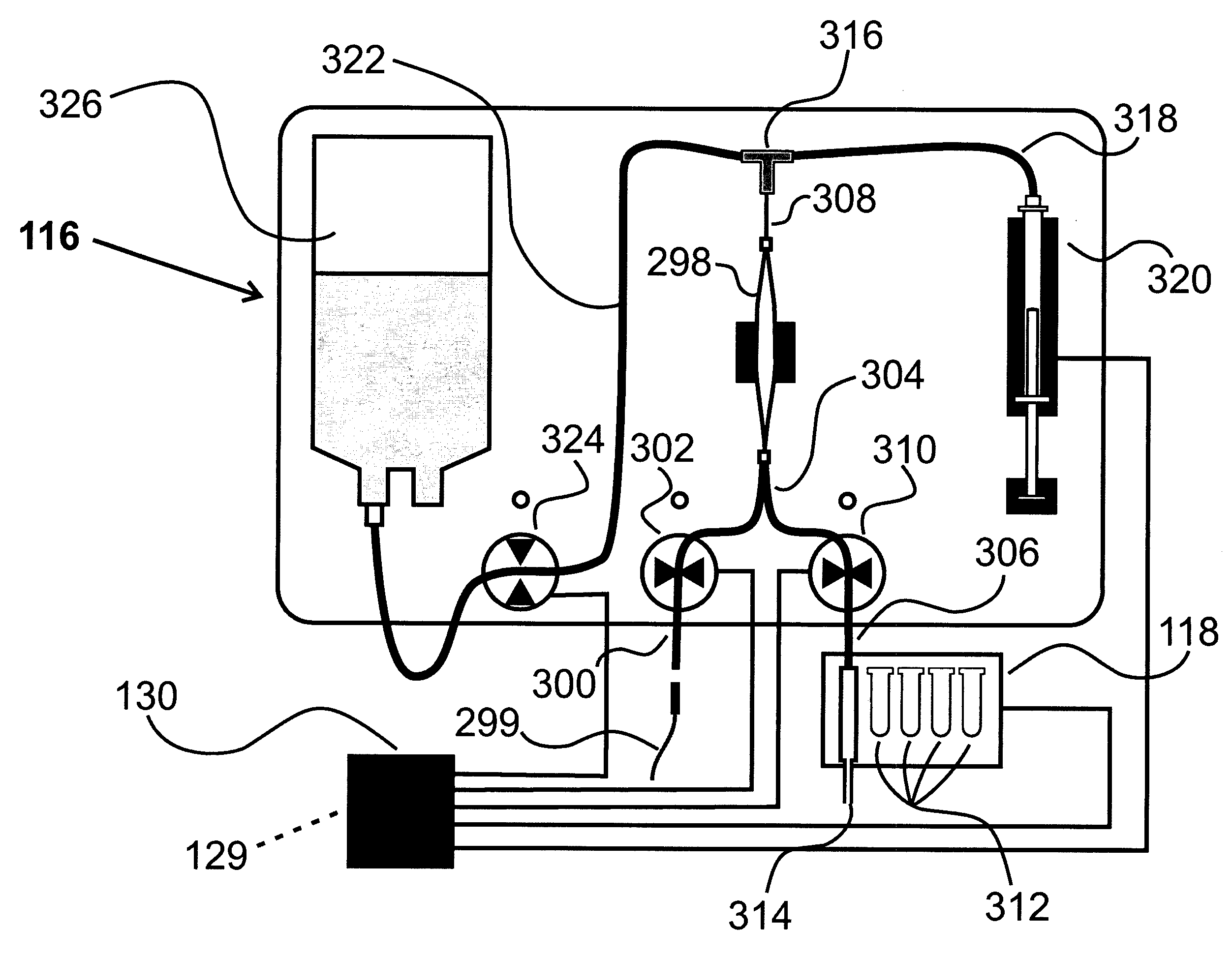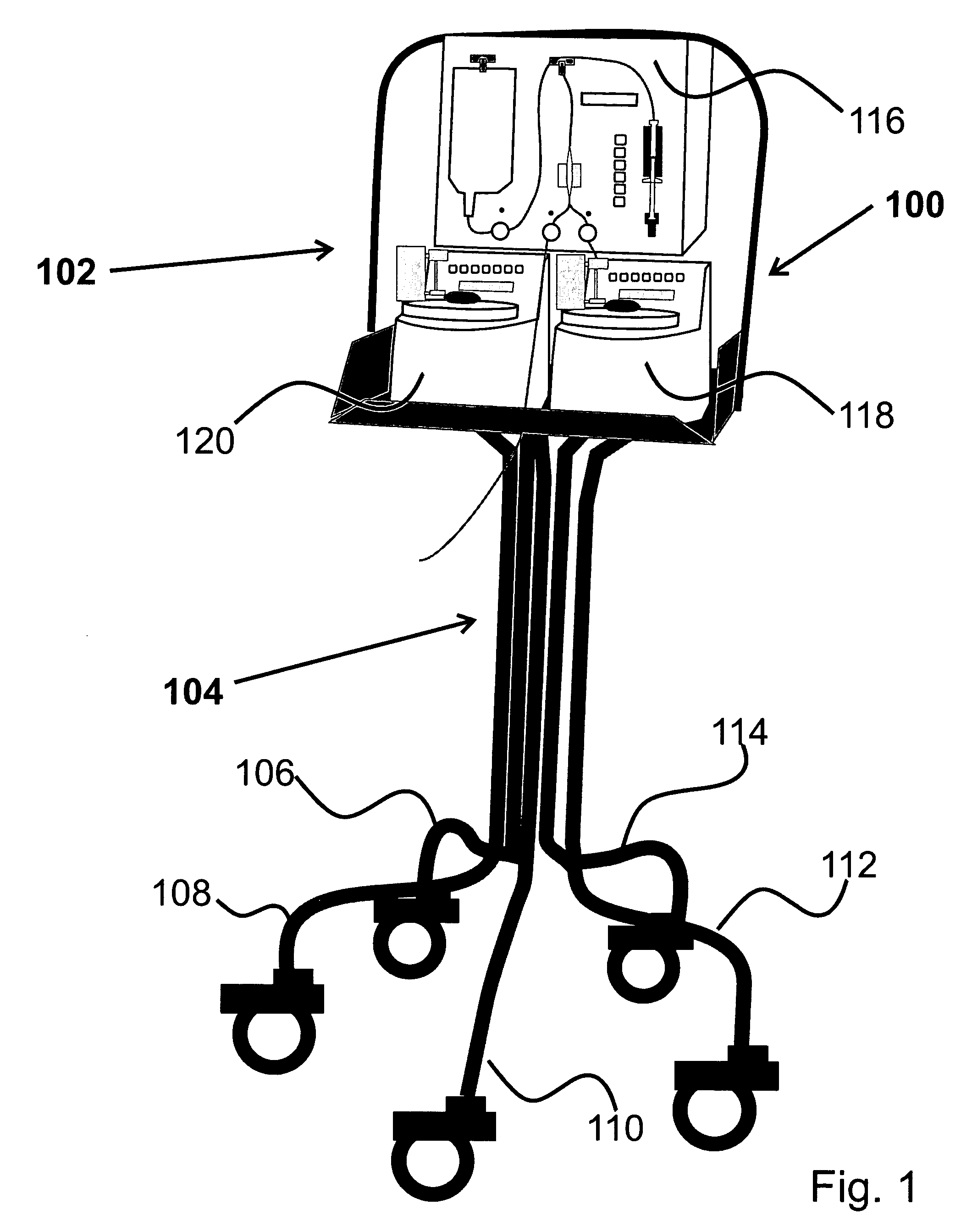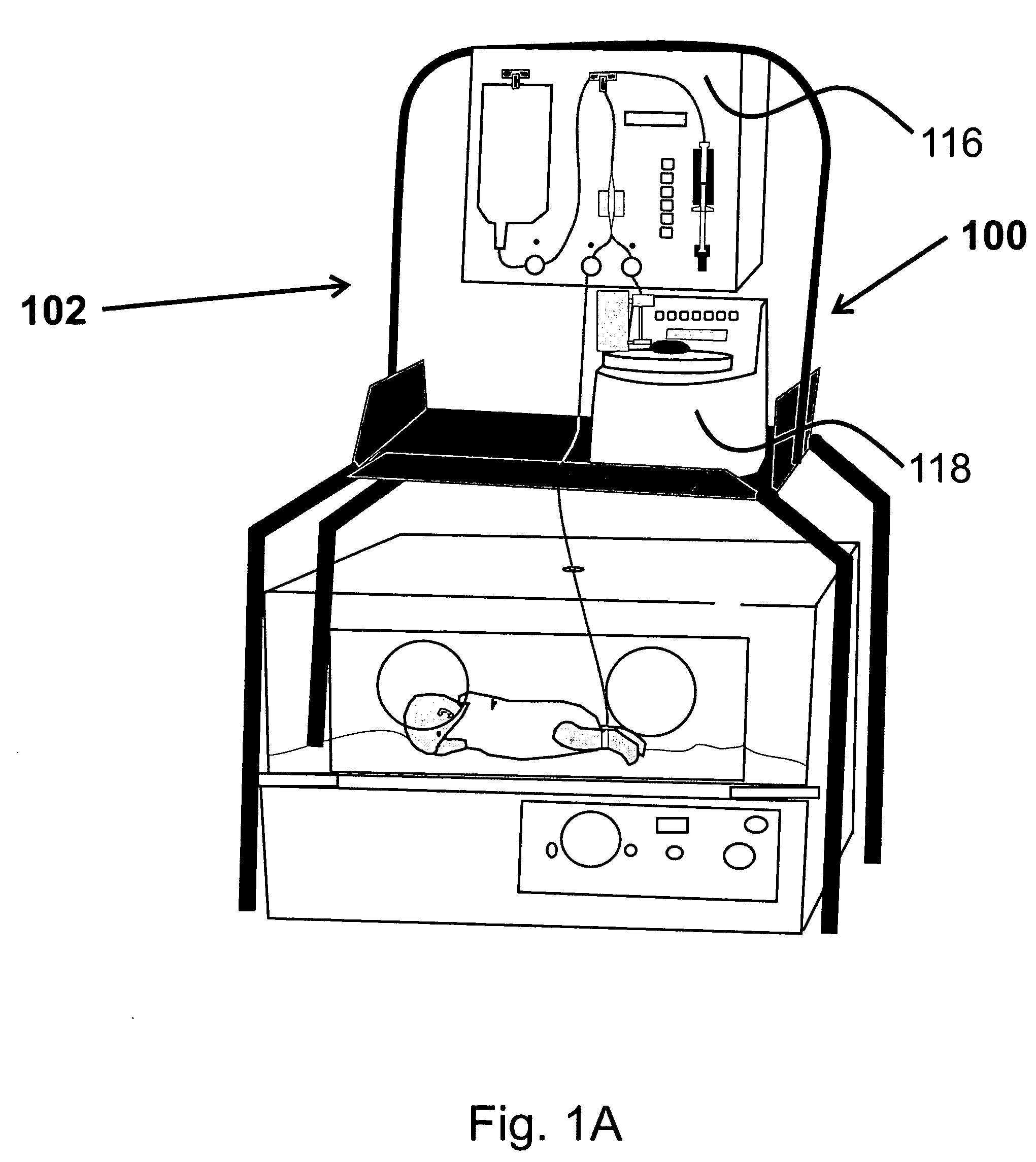Portable sampling or testing device and method for pharmacokinetics and physiology studies
a pharmacokinetics and physiology study technology, applied in the field of biomedical research, can solve the problems of not being practical for all human studies, not being desirable, and animals at risk of anemia and its associated complications, and achieve the effect of less stress and easy movement of the entire devi
- Summary
- Abstract
- Description
- Claims
- Application Information
AI Technical Summary
Benefits of technology
Problems solved by technology
Method used
Image
Examples
Embodiment Construction
[0024]Referring now to FIG. 1, there is shown a perspective front view of one embodiment of the apparatus of the present invention. Specifically, in this embodiment, portable device 100 is capable of being moved by a test subject, such as a human, or by a laboratory assistant when the test subject is a different type of large animal. In this embodiment, portable device 100 comprises equipment section 102 and mobile base 104. Mobile base 104, in this embodiment, includes legs 106, 108, 110, 112 and 114, each of which have a wheel attached thereto to permit base 104 to be wheeled about in any direction. The number of legs, and the height and shape of the legs, is a design choice, and are all contemplated to be within the scope of the invention. The use of wheels, roller balls, or other means to allow free movement of this device is likewise a design choice, and are all contemplated to be within the scope of the invention. For example, it may be desired to provide devices of various he...
PUM
 Login to View More
Login to View More Abstract
Description
Claims
Application Information
 Login to View More
Login to View More - R&D
- Intellectual Property
- Life Sciences
- Materials
- Tech Scout
- Unparalleled Data Quality
- Higher Quality Content
- 60% Fewer Hallucinations
Browse by: Latest US Patents, China's latest patents, Technical Efficacy Thesaurus, Application Domain, Technology Topic, Popular Technical Reports.
© 2025 PatSnap. All rights reserved.Legal|Privacy policy|Modern Slavery Act Transparency Statement|Sitemap|About US| Contact US: help@patsnap.com



